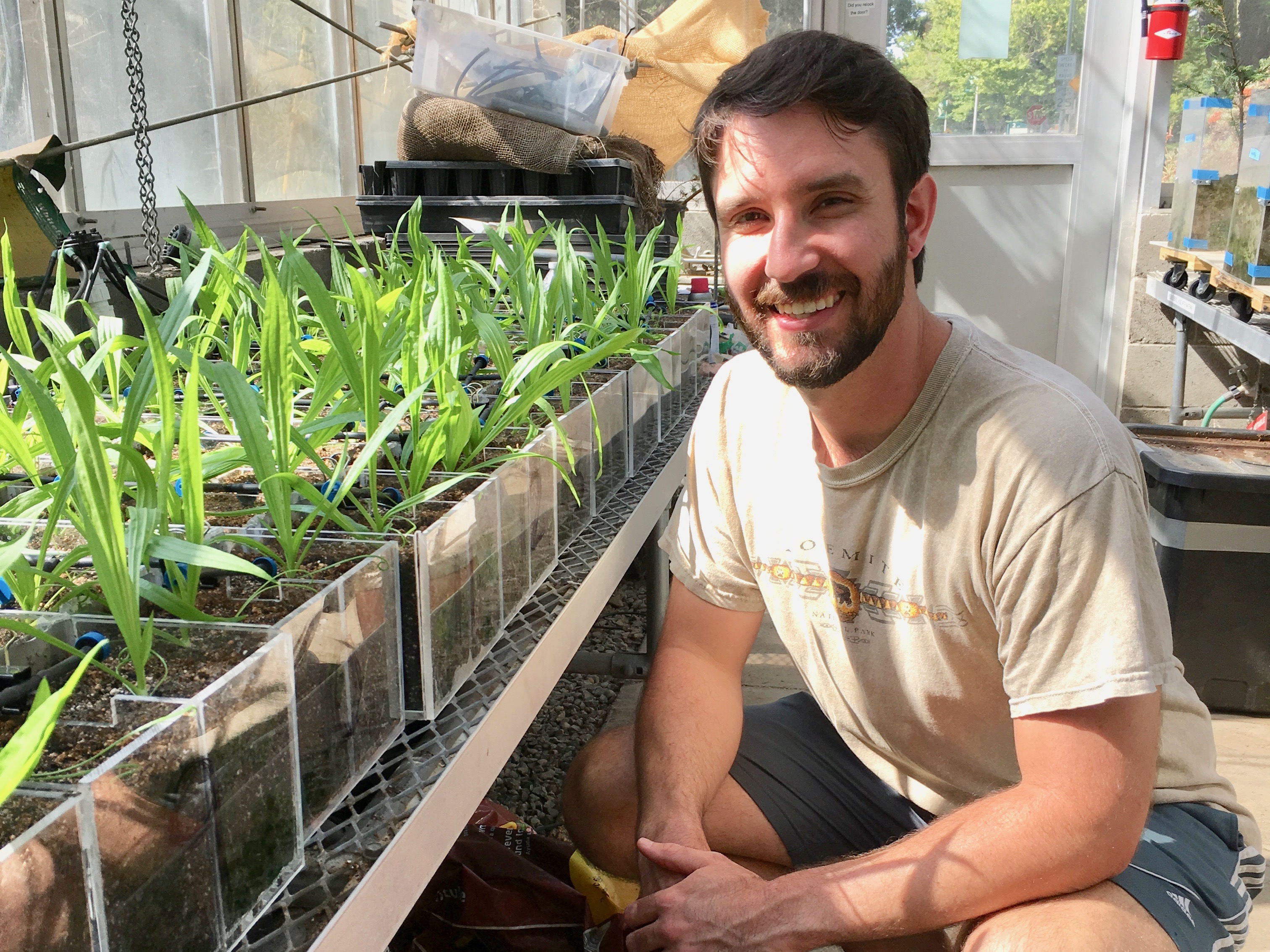
Graduate student Dan Lenz studies how belowground fungi help plants defend against herbivores
You may know that plants can signal neighbors when they are damaged by herbivores. And that they do this by releasing a chemical signal, such as a volatile organic compound, into the air. And that this chemical cue signals neighboring plants to turn on anti-herbivore defenses.
You may also know that plants are colonized by mycorrhizal fungi in a symbiotic mutualism. But did you know that individual plants are connected to one another by networks of these fungi? And that plants can share nutrients, water, and even communicate through these networks?
Dan Lenz, a graduate student in my lab, is studying the role of common mycorrhizal networks. Dan is interested in whether mycorrhizal networks play a role in facilitating plant anti-herbivore defense. His research will test the hypothesis that anti-herbivore cues are transmitted across multiple individual plants connected below ground through a common mycorrhizal network.
To test his hypothesis, Dan established experimental mesocosms in which he will damage an “emitter” plant and measure anti-herbivore responses in “receiver” plants. He has set up several different controls so he can distinguish anti-herbivore cues that are transmitted through the mycorrhizal network from other potential pathways.
Dan recently presented a poster of his proposed thesis research at Sacramento State’s annual Student Research Symposium.
If you’re curious and want to know more about mycorrhizal networks, read on.
A surprising and very cool biological fact is that virtually all plants are connected to one another below ground by fungi that colonize their roots. These fungi are known as mycorrhizal fungi. “Myco” means fungus, and “rhiza” means root. So mycorrhizae are essentially fungal roots. Or more accurately, plant roots colonized by a fungus.
Although many fungi are pathogens or decomposers living independently, mycorrhizal fungi are symbiotic mutualists and so are closely associated with plants. As a mutualism, both the fungus and the plant derive a benefit from the interaction. The plant host benefits by gaining increased access to nutrients and water, as well as other benefits such as pathogen resistance, that the fungus provides. In return, the fungus benefits by receiving carbon fixed in photosynthesis by the plant.
But their’s more to the story. It turns out that mycorrhizal fungi colonize multiple plants at the same time – even plants of different species! Consequently, the different plants in a plant community are actually connected to one another below ground in what are called mycorrhizal networks. In fact, many studies have demonstrated that through these networks plants share nutrients, water, and can even communicate!


